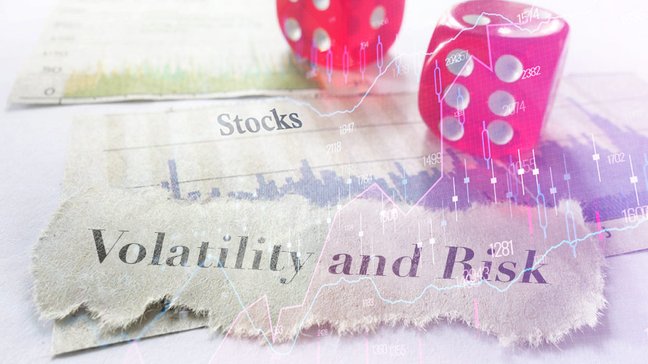The Difference between Volatility and Risk Explained
For traders, volatility is a tool to measure how returns or asset prices may scatter over a given timeframe. At the same time, market volatility is often associated with risks, especially when it comes to novice investors. Most of us have observed stocks reaching the highest highs or unprecedented lows. Investors know such rapid price changes as volatility.

It is a natural process for the stock and bonds market. However, too much volatility always involves additional risks. So, experienced traders try to identify the amount of that risk to make proper decisions regarding the ways of diversifying their portfolio.
In this article, we will explain the main difference between the stock market volatility and the risks involved in trading when the price can unexpectedly rise or fall.
Volatility Definition
Investors use market volatility to identify the changes in the asset price over a specific period. It is also very important to realize how much volatility to expect within the underlying investment, as it will define the level of risk you are about to take.
The concept works as one of the major risk management approaches when it comes to buying or selling stocks. It generally makes no sense from the long-term perspective. Usually, it plays a more important role in the short-term period, which means long-term investors can feel a smaller impact from it, especially if you build a diversified retirement portfolio.
up to 200%

from 0 pips

Trading platform

At the same time, you cannot totally avoid volatility, as it is integrated into the market. The only thing you can do is to avoid buying underlying instruments that come with higher volatility compared to the overall market.
Risk Definition
Following the definition established by SEC, risk describes the level of uncertainty in the financial market. In simpler words, an investor does not know what impact the next financial decision will take. In reference to stocks, it means that traders are more likely to buy assets issued by well-established companies rather than startups that come with greater risks.
On the other hand, investing in riskier stocks usually promises higher and faster returns, although the chances of assets losing their value are still very high. For example, bonds issued by US Treasuries come with lower investment risks. At the same time, they offer probably the lowest return even in the long run.
Summing up, it is all about your trading style and personality. You are to decide whether to take the risk expecting higher returns or keep a low profile benefiting from steady and low income.
Stock Market Volatility vs. Risks: The Key Difference
Volatility and risks are the two main factors to consider when deciding on the next investment. They go hand in hand when it comes to using baseline financial market metrics that help investors determine the level of potential risk.
“Beta” Method to Compare Market Volatility
Experienced traders use a so-called “Beta” method that helps them measure the level of stock volatility. It supposes 3 different conditions:
- If you use a beta equal to 1.0 as the baseline measurement, it means that the stock volatility is similar to the market one (they both can potentially fall and rise).
- A beta below 1.0 means that the market is more volatile than the asset.
- A beta above 1.0 depicts an asset with higher volatility compared to the market.
A more volatile asset (featuring higher beta) must be associated with higher investment risk. Oppositely, stocks with lower beta offer more stability and are risk-free though with lower income.
How to Determine Ideal Risks
Volatility itself should never be the driving force when you make up your mind about buying or selling an underlying stock. Investors should take educated and well-thought decisions taking into consideration a variety of factors.
If you want to balance the risk in your portfolio, you might take into account stocks with a longer time horizon. This works for long-term investments, for instance, if you plan to tap them in 10 years or more as a part of your retirement plan. If you will need them the following year, waiting for the market to recover after a crash is hardly a good idea.
The Bottom Line
The choice will also depend on your specific risk tolerance. It is the rate of risk one can afford to accept. The more different assets you have (the more diversified your portfolio), the higher risks you will be able to take.
This material does not contain and should not be construed as containing investment advice, investment recommendations, an offer of or solicitation for any transactions in financial instruments. Before making any investment decisions, you should seek advice from independent financial advisors to ensure you understand the risks.
